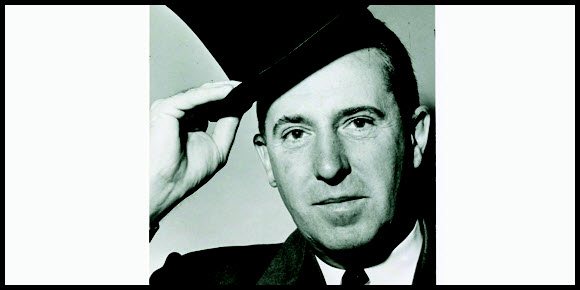by Bruce Cherney (part 3)
Winnipeg Free Press columnist Michael Best on November 21, 1953, reported that Mayor Garnet Coulter said Winnipeg ratepayers had missed the boat to build a new city hall in 1949 on the 3.4 acres of land on which United College (now part of the University of Winnipeg complex) was located. The council could have bought the land for $700,000, but the proposition was nixed by ratepayers by a vote of 17,377 to 10,832.
Mayor Coulter told reporters that the college had offered the best solution, and it was an opportunity that wasn’t likely to arise again.
“Other solutions have been offered recently — including the (Winnipeg) Electric Railway Chamber building (on Notre Dame), the site at Osborne and Broadway and another at Logan and McPhillips — but none has captured the general aldermanic fancy,” wrote Best.
While the city hall clock had fascinated some in the past, Best claimed each of its four sides typically showed a different time. The bell in the tower had already been taken down as it threatened to shake the structure to pieces every time it rang.
Best wrote that most aldermen would seize upon the first sound scheme proposed for a new city hall.
Reporter Ken Murphy wrote in the Free Press on February 13, 1954, that at least 10 sites over the years had been suggested for the new city hall, although by that date two had been excluded — United College and the WEC building.
The sites still being considered were: 1. the area bounded by James and William avenues and Princess and Main streets; 2. the area bounded by Broadway, Memorial Boulevard and Cooper Street; 3. the area bounded by Qu’appelle and Ellice avenues and Kennedy and Carlton streets; 4. the area bounded by St. Mary and Broadway avenues and Kennedy and Carlton streets; 5. the area bounded by Bridges Avenue, the Assiniboine River, Colony and Osborne; 6. the area bounded by Sherbrook and Maryland streets, Portage Avenue and St. Matthews Avenue; 7. a site somewhere in the large area bounded by Notre Dame and Logan avenues and Arlington and McPhillips streets; and 8. the St. Paul’s College (Manitoba College) site.
According to Murphy, the committee investigating possible sites favoured No. 2, No. 3, No. 4 and No. 8, or Nos. 3 and 8 combined.
A points system by the Metropolitan Planning Commission ranked the No. 2 site highest with 75 points. The existing city hall site ranked second. The United College site, which was defeated by ratepayers in 1949, had ranked the highest with 89 points.
Another article in the same newspaper on December 2, 1954, claimed a $10-million civic centre was being suggested, which would necessitate the erection of at least three new buildings on the existing city hall area, with additional land expropriated for that purpose. The existing city hall would be retained for sentimental reasons.
Columnist Boyce Richardson, writing in the September 24, 1956, Free Press, stated with obvious sarcasm that it wasn’t surprising that people didn’t want the existing city hall destroyed.
“The hall is, indeed, the best example in western Canada of a peculiarly ugly type of architecture. Because of its ugliness it has won a soft spot in many sugary prairie hearts.”
He wrote that Winnipeg had an opportunity to “build the most wonderful city hall on the North American continent. Winnipeg has a chance to erect a building that will make it the talk of the Americas, and spread its fame to Europe.”
Premier Douglas Campbell entered the site sweepstakes when he wrote a letter in August 1956 to Mayor George Sharpe indicating that Broadway land across from the Manitoba Legislature might be made available by the province provided that the new city hall wouldn’t hide the view from the north of the legislative building and the city solved any traffic problems that might arise.
Winnipeg city council voted to accept the provincial offer for the new city hall on the land bordered by Broadway and Osborne.
The selection of the Broadway location by city council became an issue in the 1956 election for Winnipeg’s mayor.
Candidate Stephen Juba, seeking to unseat incumbent Sharpe, issued the statement (reported in the October 23, 1956, Free Press): “The offer of Premier Campbell to supply (the city) with a piece of property for a new city hall is clear evidence that the provincial government dreads my election as mayor in Wednesday’s city elections.
“That the premier of this all-rural government (only 25 per cent of the 57 seats in the legislature were allocated to Winnipeg) is no friend of the city of Winnipeg has been proven again and again in the past. But consider what he has done now. He has thrown to his trained seal George Sharpe, a fish which the mayor can eat on at election time.”
Juba claimed that the premier never did anything for the city without expecting something substantial in return. “What is Mr. Sharpe giving Mr. Campbell in return?” Juba asked.
(Next week: part 4)



